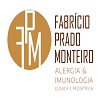Keynote Forum
Huang Wei Ling
Medical Acupuncture and Pain Management Clinic,Brazil
Keynote: Is it possible to treat community-Acquired and nosocomial infections with the same method, without the use of antibiotics?
Time : 09:30 - 10:40

Biography:
Huang Wei Ling, born in Taiwan, raised and graduated in medicine in Brazil, specialist in infectious and parasitic diseases, a General Practitioner and Parenteral and Enteral Medical Nutrition Therapist. Once in charge of the Hospital Infection Control Service of the City of Franca’s General Hospital, she was responsible for the control of all prescribed antimicrobial medication and received an award for the best paper presented at the Brazilian Hospital Infection Control Congress in 1998. Since 1997, she has been presenting her work worldwide, concerning the treatment of various diseases, using techniques based on several medical traditions around the world.
Abstract:
The difference between community-acquired and nosocomial infections is that community-acquired infections are defined as infections contracted outside of a health-care environment. Nosocomial infections, on the other hand, are those contracted after the patient’s admission and not incubated before hospitalization. In addition, the microorganisms potentially causing community infections are generally more sensitive to antimicrobials, as opposed to nosocomial infections, which are generally caused by multi-resistant bacteria.
The purpose of this study is to demonstrate that community-acquired and nosocomial infections can be treated with the same approach and without the administration of antibiotics. The method used was to include older medicine theories such as Traditional Chinese Medicine and three case reports of community-acquired infection compared to another three cases of nosocomial infection. All six cases were treated with the same method, by balancing the Yin, Yang, Qi and Blood, removing the Internal Heat using auricular acupuncture, and using energy based Chinese dietary reorientation.
Findings: All cases of community-acquired and nosocomial infection reported in this study improved uniquely with the treatment administrated with no prescription of antimicrobials and the use of these drugs themselves was generating the energy imbalance that maintained the infectious process.
Conclusion: Based on these six clinical reports, we can use the same method to treat community-acquired and nosocomial infection. This research was based on the theories of Traditional Chinese Medicine, which indicated that these diseases came from the same roots, and therefore could be treated with the same method.








































